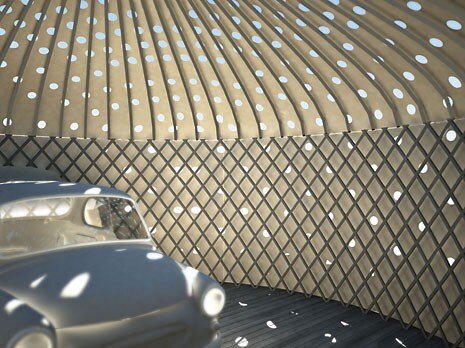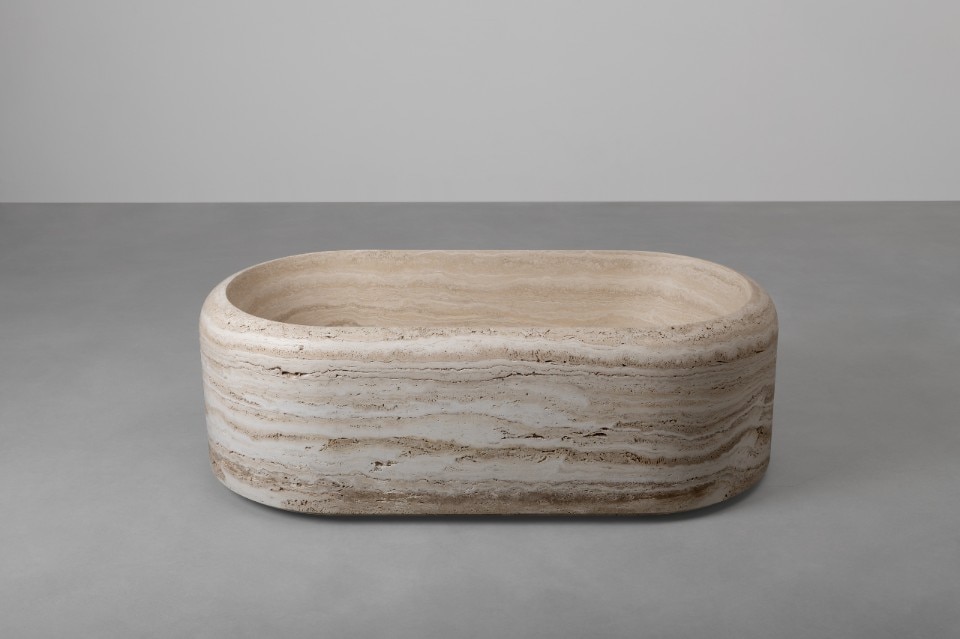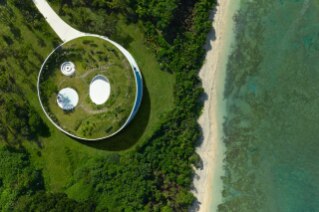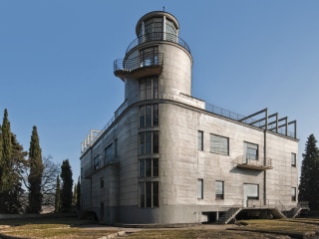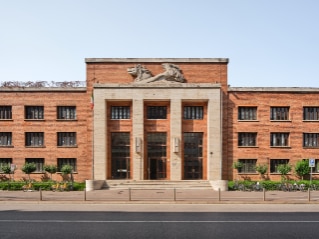Yet we rarely notice the Arsenale in all its grandeur. We move through its huge spaces unaware of its ghosts and only aware of our tiredness as we try to take in the greatness of art or architecture. On one occasion, in the depth of winter when nobody was there to experience these spaces, we were walking through the building when we noticed, through a window that had been left uncovered, a part of the Arsenale that had caved in. We walked over, lifted the black veil and realised that we had found the heart of the Arsenale, the place that would tell us all about this dark enigma hidden in a city of facades and floating mirages.
To be honest, it is a mess. A wreck. A ruin. This space was destroyed by a storm, and when the roof collapsed, a space opened up. It is not a space that we can occupy or use for anything. It is a space that the building itself occupies, revealing itself. The beams came crashing to the ground, landing at angles to each other, some of them still connected to the walls that once supported them, some reaching towards each other for some form of assistance. The walls were still mainly standing, though they were crumbling at their ridgelines. Roof tiles and random bits of construction created a carpet of terracotta and splinters, splayed and frayed beyond any sense of the tight fabric they once wove over our heads. Together, the structure forms a landscape. Mountains of wood and brick, valleys of tiles and explosions of wood create nests and nooks, peaks and valleys in what was once just a room. Plants and trees have grown up, mixing what humans have made and birds have dropped to create a hybrid structure, artificial and random, structural and organic at the same time.
This mess is beautiful. It allows us to see all the bits and pieces of the construction that we usually take for granted. It has turned the absent planes through which we move into objects of incredible complexity, without giving them any thought; with only the display of its ruinous self, it has occupied space that once served functions. Ruins are generally beautiful. They deconstruct the structures of everyday life and display them. They remind us of our own corporeal existence, which is after all even frailer and more subject to the ravages of time than buildings. They create constructions that are collages in which the material itself escapes any attempt at being subjected to external laws of framing, hierarchy, logic or consistency. They create free compositions.
We have therefore adopted this ruinous fragment of the Arsenale as our project. It is emblematic of what we want this Biennale to achieve. We want to show that architecture is not always about making the new, the coherent or the serviceable. Some of the best architecture reveals rather than resolves. It opens up and occupies, instead of framing and facilitating. It draws our attention to how things are made, how we make things, and how things could be made differently. It is always an unfinished project of rearranging reality in a critical manner.
We felt that we could not make a project for this Biennale because what we are trying to do is simply reveal the essence of architecture beyond, within or without the form it usually takes, that of the building. We wanted to find something that would let us experience what is already there. So this is our project. It is not built, but unbuilt. We have not designed it, but stolen it. We cannot allow anyone to enter it, only to get a glimpse of it. Perhaps this description is the only form it will take. It was not meant to be a project, but we have designated it as such. It is a gathering together of the Arsenale into un-concealment, and in it the essence of an architecture beyond building stands revealed. It is our masterpiece. We did nothing.
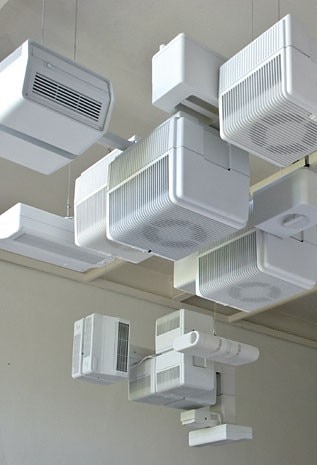
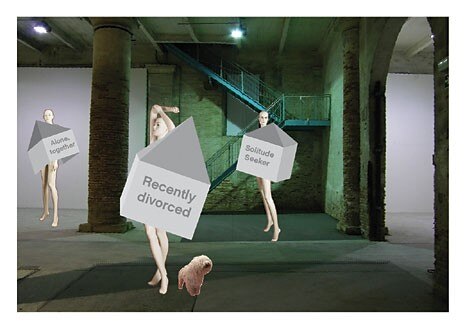
![Barkow Leibinger,
formation[RE]formation Barkow Leibinger,
formation[RE]formation](/content/dam/domusweb/en/architecture/2008/09/10/the-unbuilt-project/jwVol5_BarkowLeibinger_01_b.jpg.foto.rmedium.jpg)
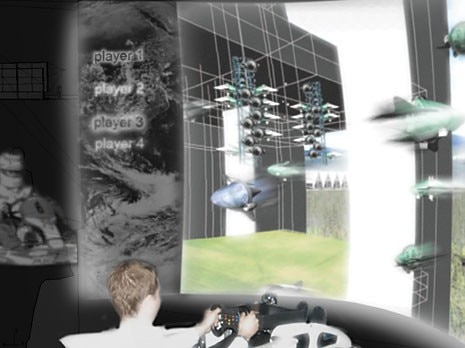
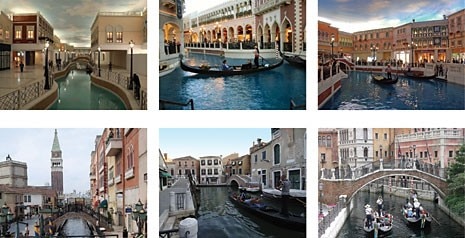

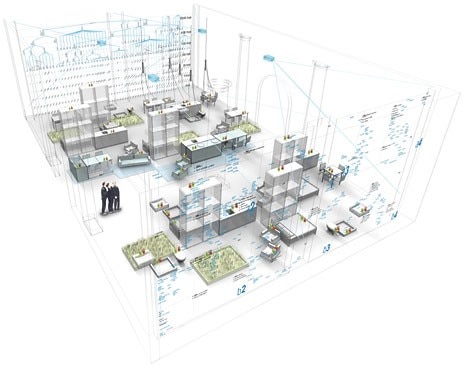
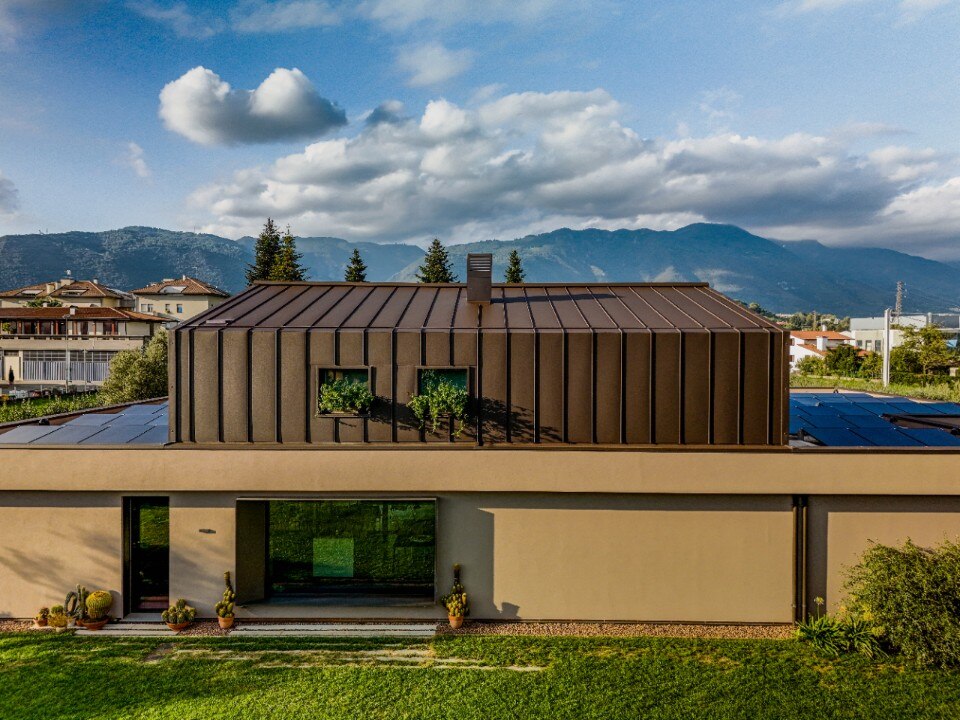
A house turns its back on the road to open up to the landscape
The single-family house project designed by Elena Gianesini engages in a dialogue with the Vicenza landscape, combining tranquility and contemporary style through essential geometries and the Mazzonetto metal roofing.


